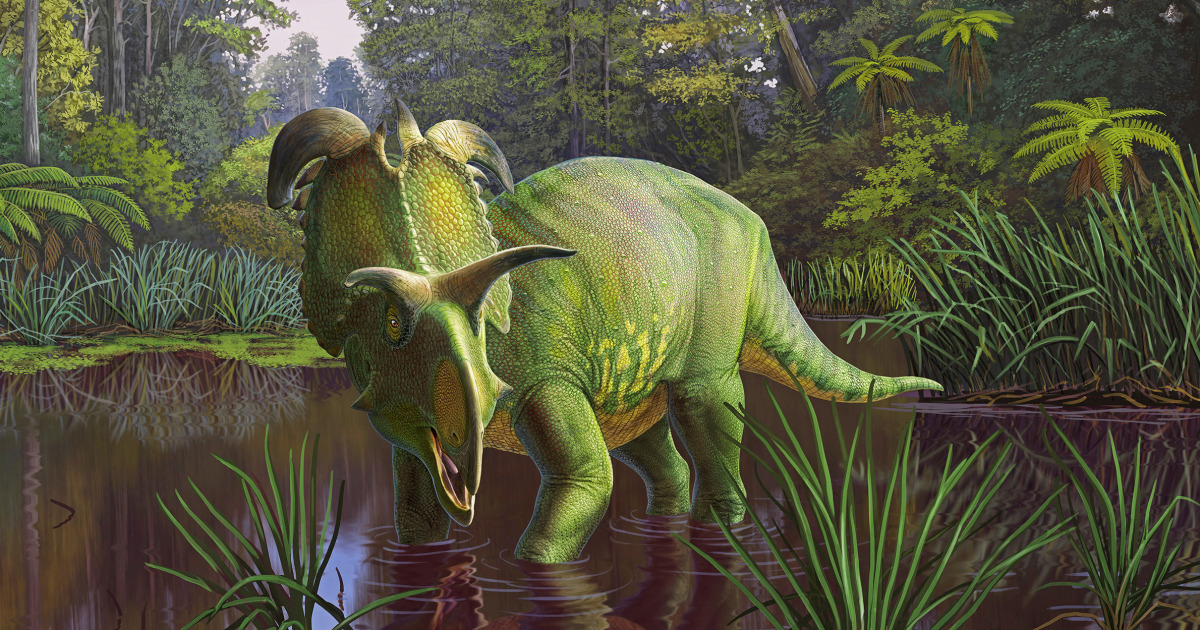Time: 2024-06-22

A new dinosaur species has been discovered in the badlands of northern Montana near the U.S.-Canada border. Fossils of the dinosaur, named Lokiceratops rangiformis, were found on private land in Kennedy Coulee. This dinosaur belongs to a group of horned dinosaurs known as ceratopsids, which evolved during the Late Cretaceous period about 92 million years ago.
Lokiceratops is estimated to have measured 22 feet long and have weighed about 11,000 pounds, making it the largest herbivore in its ecosystem at that time. The horns of Lokiceratops are the largest and most ornate ever found in the family of dinosaurs it belongs to, with two large horns on each side of the frill and more than 20 horns along the frill.
Lokiceratops has been described as an unusual dinosaur due to its unique features, including blade-shaped horns and a spiky crown of horns around its face. Some scientists have likened it to the Norse god Loki, after whom it was named. The dinosaur's distinct characteristics differentiate it from other ceratopsids that lived alongside it during the Late Cretaceous period.
The discovery of Lokiceratops has sparked discussions among paleontologists about whether it represents a new species or a variation of another dinosaur in the ceratopsidae family. However, researchers behind the study have emphasized the significance of Lokiceratops' features, such as the number and arrangement of horns on its frill, to establish it as a distinct species.
Researchers have conducted a thorough analysis of Lokiceratops' fossils and compared them to other dinosaurs to confirm its status as a new species. The fossils were discovered in 2019 and have since been cleaned, restored, and mounted for display. The reconstructed skull of Lokiceratops is showcased at the Museum of Evolution in Maribo, Denmark, while a full-sized sculpture of the skull is on exhibit at the Natural History Museum of Utah in Salt Lake City.
The discovery of Lokiceratops has provided insights into the ecological relations and coexistence of different horned dinosaurs in the Late Cretaceous period. The significance of this new genus and species has been acknowledged by experts, highlighting the importance of ongoing research and exploration to uncover more about the prehistoric world and the diversity of dinosaur species.